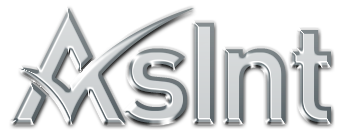Asset-intensive businesses rely heavily on upfront capital investments and multi-decade maintenance costs. This means that asset owners must consider short- and long-term objectives while choosing supporting data management, end-user applications, and IT systems and platforms. The challenge for asset owners is managing the thousands of cost-related tasks to maintain the physical asset while managing the data and software in an ever-changing IT landscape.
To meet these demands, owners/operators turn to data to make strategic and tactical decisions about the physical asset. However, due to the longevity of the asset, asset owners must rely on sustainable, secure, and scalable software solutions to meet the organization’s financial and health, safety, and environmental objectives.
The problem with data management and IT systems is that they often become unsustainable over time. Software vendors may achieve initial integration, but changes to the primary Enterprise Asset Management (EAM) system or third-party software applications over time can cause the integrations not to achieve the objective or fail altogether.

Illustration A
Horizontal integration is a common approach where software is not dependent on another software to run or use, making the integration “optional.” However, this approach can cause issues such as major platform changes, data synchronization, data duplication, data silos, and security vulnerabilities. Two primary issues that owners/operators face within horizontal integration are work management recommendations that are not synchronized with the work management solution, increasing health, safety, and production risk, and change management to forms and assessment methodologies.
The solution to this problem is vertical integration. Vertical integration ensures there are no nodes to manage but apps that exist within a common software solution “stack.” The software “stack” provides a data layer, business logic layer, and end-user application layer, as well as functions such as user and security management, application development, internationalization and localization, and package and deployment capabilities. Most EAMs offer this capability, but third-party software vendors have stayed away from vertical integration because it constrains them to the specific EAM vendor, though there is a large overlap in functionality. However, customers who rely on the EAM desire vertical integration because they understand well the issues of horizontal integration.
Vertical integration provides a scalable and maintainable platform that allows asset-intensive businesses to manage a common data model to develop applications while allowing IT departments to scale to meet global changes to the business within a secure infrastructure.
In conclusion, asset-intensive businesses struggle with defining data models and software functionality that helps them scale the business while meeting production, health, safety, and environmental objectives. Cloud-based platforms such as the SAP BTP (Business Technology Platform) allow businesses to create and manage core data sets and functionality while allowing “apps” to be developed and deployed within the “stack” to help meet tactical and strategic business initiatives. Vertical integration can help asset owners to address their challenges and provide a more sustainable and scalable IT system for managing their physical assets.
